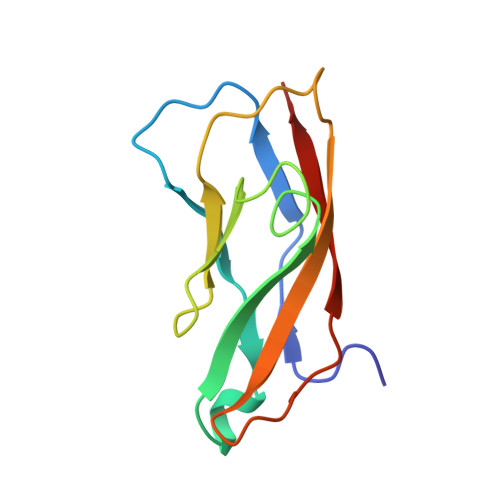Extending the host range of Listeria monocytogenes by rational protein design.
Wollert, T., Pasche, B., Rochon, M., Deppenmeier, S., van den Heuvel, J., Gruber, A.D., Heinz, D.W., Lengeling, A., Schubert, W.D.(2007) Cell 129: 891-902
- PubMed: 17540170
- DOI: https://doi.org/10.1016/j.cell.2007.03.049
- Primary Citation of Related Structures:
2OMV, 2OMW, 2OMY - PubMed Abstract:
In causing disease, pathogens outmaneuver host defenses through a dedicated arsenal of virulence determinants that specifically bind or modify individual host molecules. This dedication limits the intruder to a defined range of hosts. Newly emerging diseases mostly involve existing pathogens whose arsenal has been altered to allow them to infect previously inaccessible hosts. We have emulated this chance occurrence by extending the host range accessible to the human pathogen Listeria monocytogenes by the intestinal route to include the mouse. Analyzing the recognition complex of the listerial invasion protein InlA and its human receptor E-cadherin, we postulated and verified amino acid substitutions in InlA to increase its affinity for E-cadherin. Two single substitutions increase binding affinity by four orders of magnitude and extend binding specificity to include formerly incompatible murine E-cadherin. By rationally adapting a single protein, we thus create a versatile murine model of human listeriosis.
- Molecular Host-Pathogen Interactions, Division of Structural Biology, Helmholtz Centre for Infection Research, Inhoffenstr. 7, D-38124 Braunschweig, Germany.
Organizational Affiliation:



















